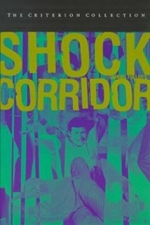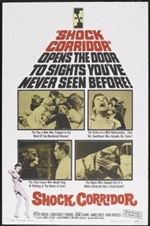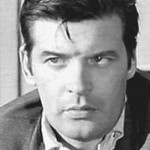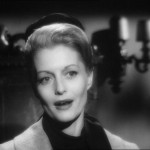 Shock Corridor/1963/F & F Productions/101 min.
Shock Corridor/1963/F & F Productions/101 min.
With the nuttiness of holiday travel and family gatherings nigh, we at FNB think it’s the perfect time for a little noir fun at the insane asylum. Crazy? Bring it on!
By Michael Wilmington
Sam Fuller’s B-movie noir “Shock Corridor” – about an arrogant reporter trying to solve a murder in an insane asylum – is a cheap little picture that packs wallop after wallop in one powerfully conceived and incandescently unhinged scene after another. Fuller fears neither God nor man in this show. And he especially doesn’t fear most movie critics, whose every canon of taste and judgment he tends to ignore or trample on, but who wound up largely on his side anyway.
Set mostly in the asylum’s endless corridor (an effect done with mirrors and midgets), the movie makes its very cheapness an asset – low-budget minimalism turning into something of a nightmare. It’s a world emptied of conventional signposts, an arena in which lunatics and doctors can act out their strange drama without interference. In the center of it all, reporter Johnny Barrett (Peter Breck of TV’s “The Big Valley”) poses as a psycho and gets committed so he can hunt for the asylum killer. This story, he reckons, will yield a Pulitzer and plenty of cash.
Egotistical and argumentative, Johnny seems a bit of a head case himself. His ruse starts when he rehearses the symptoms of psychosis with a friendly psychiatrist, Dr. Fong (Philip Ahn). Then he enlists his stripper girlfriend Cathy (Constance Towers) to masquerade as his sister, for whom he feigns an incestuous obsession. That would seem an easy lie to check and disprove, but, as usual with Fuller, we let it pass. The movie, though, would probably have been stronger if there’d been a real sister, in addition to Cathy.
Played out with maximum impact against severe white backdrops, the script starts succumbing to B-movie infatuations and noir shtick of its own. Johnny jaw-bones with the know-it-all Dr. Menkin (Paul Dubov) and befriends the huge-of-girth, opera-singing Pagliacci, played by Larry Tucker, the comedy/scriptwriting partner of Paul Mazursky. (Mazursky asked Fuller why he wasn’t cast in “Shock Corridor” too, only to be told, “You were too skinny.”)
Johnny interrogates three crazy witnesses: Stuart (James Best), a Korean war veteran who thinks he’s a Confederate Civil War general; Trent (Hari Rhodes), a trail-blazing black student at a Southern white university who thinks he’s a grand wizard in the Ku Klux Klan, and Boden (Gene Evans, the Sgt. Zack of Fuller’s great Korean War movie “The Steel Helmet”), the world’s most brilliant nuclear scientist, now with the brain of a 6-year-old. As Johnny gets closer to the truth of the murder mystery, he also edges closer to real madness, stumbling closer to the traps of insanity that seemed to bedevil him from the start.
If you compare the pulpy, uninhibited “Shock Corridor” to a relatively realistic picture of mental institutions and psychiatry like Milos Forman’s film of Ken Kesey’s “One Flew Over the Cuckoo’s Nest,” or the Olivia de Havilland asylum drama “The Snake Pit,” you’ll find it wanting.
Fuller is a polemicist who likes to editorialize and use his stories to get at overarching truths. The Cold War, racial prejudice and the arms race are as loony as the inmates. Journalism is a trust, not a goldmine. Madness and sex are nothing to toy with.
 The seeds of “Shock Corridor” were in a thriller script with an exposé attitude called “Straightjacket” that Fuller wrote for Fritz Lang in the ’40s. In “Shock Corridor,” Fuller spreads his net wider. American society itself, in addition to psychiatry, is under the lens.
The seeds of “Shock Corridor” were in a thriller script with an exposé attitude called “Straightjacket” that Fuller wrote for Fritz Lang in the ’40s. In “Shock Corridor,” Fuller spreads his net wider. American society itself, in addition to psychiatry, is under the lens.
The movie was a hit with audiences and critics, especially ’60s auteurists. The cast, though less than A-list, is good and the technical talent is ace-high. Eugène Lourié (of Renoir’s “Rules of the Game” and “The Southerner”) did the sets. Stanley Cortez (“The Magnificent Ambersons,” “The Night of the Hunter”) was the cinematographer. They make the movie look great.
Shot and cut by Fuller just as he wanted, with nothing held back and probably nothing softened, it’s a movie that, like Johnny, may seem at first too brash, too loud and too wild. But it gets the story told. Shockingly.












From FNB readers